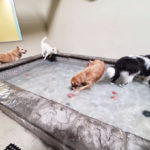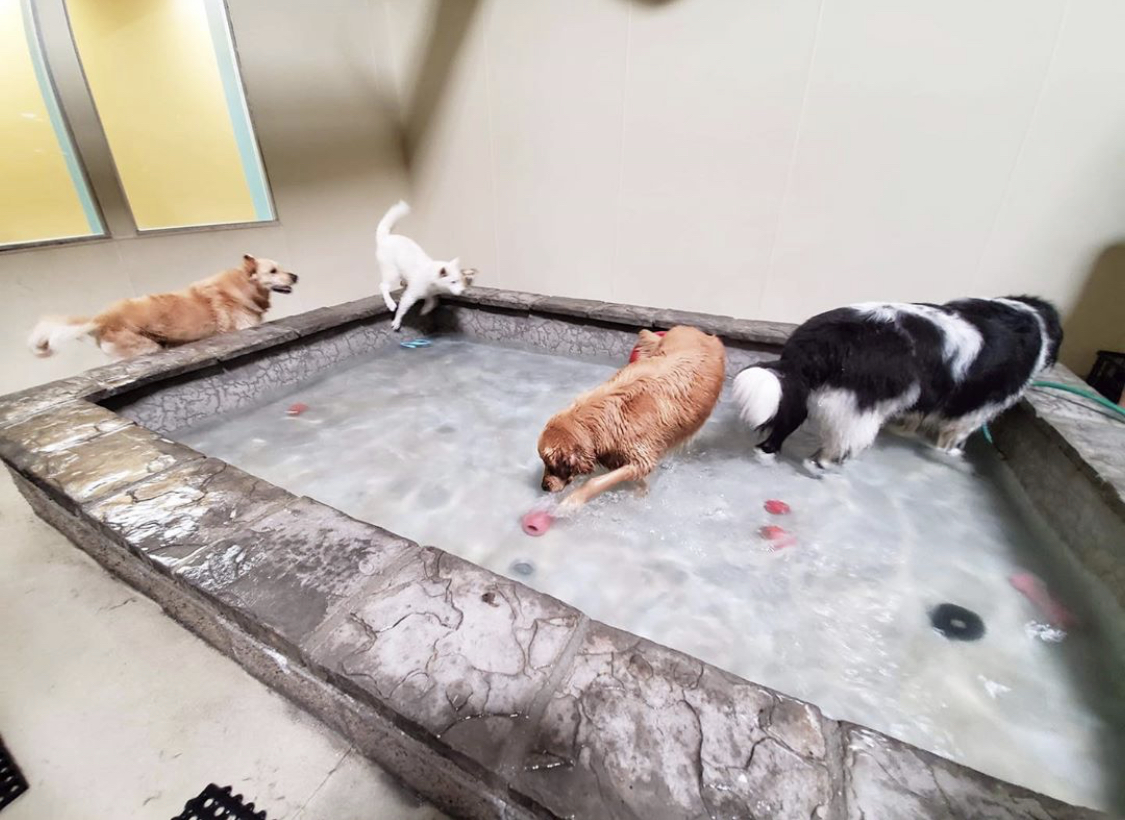If your dog is reactive on a leash, you’re likely accustomed to your beloved pooch making a scene while out on a walk. Just the sight of another dog approaching sends your dog into an uncontrollable tizzy; barking, lunging, and growling. This behavior is enough to fluster and embarrass any pet parent, making walks a dreaded chore instead of a pleasant outing.
While most Covid-19 precautions are a (necessary) nuisance, the “six-feet apart” rule has actually made walk time a little less stressful for pet parents of reactive dogs. Now, crossing the street when you see someone with another dog approaching isn’t just common curtesy, it’s a CDC guideline. But what happens when we no longer have to stay six feet apart and a friendly neighbor wants to try an on-leash meet and greet?
Let’s take a closer look at leash reactivity and what you can do to deter the behavior.
What is Leash Reactivity?
Leash reactivity is a common behavior among dogs that many pet parents struggle with. There are several things that can trigger leash reactivity, including dogs, people, cars, and bicycles. The dog will bark and lunge, and the owner will likely struggle to gain control. This outburst is the result of frustration at the barrier (the leash) and excitement. Leash reactivity can be extremely frustrating for pet parents and quite scary for bystanders.
Tips for Managing Leash Reactive Dogs
 More Exercise – Usually, the root of the problem is excess energy. Make sure your pup is getting plenty of regular exercise. If your leash reactive dog has energy to spare, find a way for him to get his extra wiggles out. Doggie daycare can be a fun and effective way to tire your pup out.
More Exercise – Usually, the root of the problem is excess energy. Make sure your pup is getting plenty of regular exercise. If your leash reactive dog has energy to spare, find a way for him to get his extra wiggles out. Doggie daycare can be a fun and effective way to tire your pup out.- Stay Calm – As stressful and embarrassing as a leash reactivity temper tantrum can be, it’s important to try to stay cool, calm, and collected.
- Desensitize – Start by desensitizing your dog so they don’t get too hyped up on walks. Leash your pup, pour a glass of wine or grab a beer, sit down on the couch, and watch an episode of your favorite show. You can also take this time to work on getting his attention. Say his name and reward him with a tasty treat when he looks at you.
- Take It Outside – After you’ve worked on desensitizing your pup inside the home, move to a calm area outside the home such as your front yard, a quiet park, etc. Bring a towel, blanket, or mat to have your dog sit on (while on leash, of course) and let him watch other dogs (or whatever his trigger is) go by from a distance. Practice getting his attention, just as you did in your living room. Say his name and when he makes eye contact with you, reward him.
- Get His Attention – When you see another dog (or the trigger) approaching while on walk, try to get your dog’s attention before he notices and has time to react. Reward him when he makes eye contact and try to retain his attention until the dog passes by at a safe distance.
- Walk Away – If your dog starts barking and lunging, calmly turn around and walk away. Get some distance between your dog and the trigger, get his attention, and once he’s calm, you can try again.
- Don’t Punish – Don’t punish your dog when he’s being reactive on leash. Stay calm and remove your dog from the situation.

- Avoid On-Leash Meet and Greets – When someone with a dog tries to approach you and your dog head on, cross to the other side of the street or explain that your dog is in training and you’re not allowing him to greet others at this time.
Leash reactivity can be difficult to manage and a hard behavior to break. If you’re still struggling to keep your pup under control during what should be a pleasant stroll, enlist the help of a dog trainer. Visit our website or contact us at 1-800-964-7297 to learn more about our training programs and how we can help.







